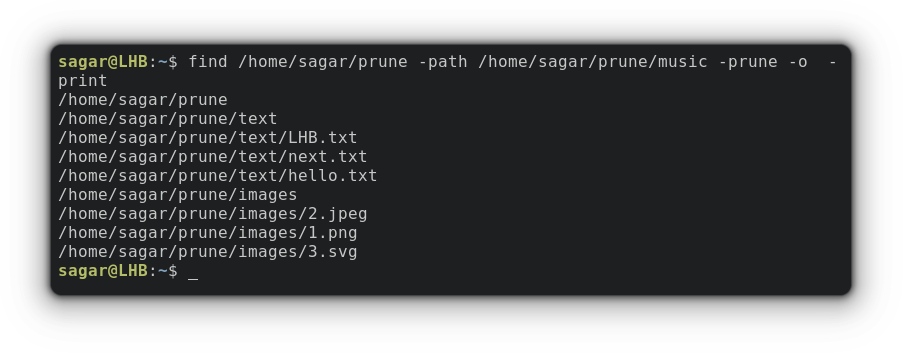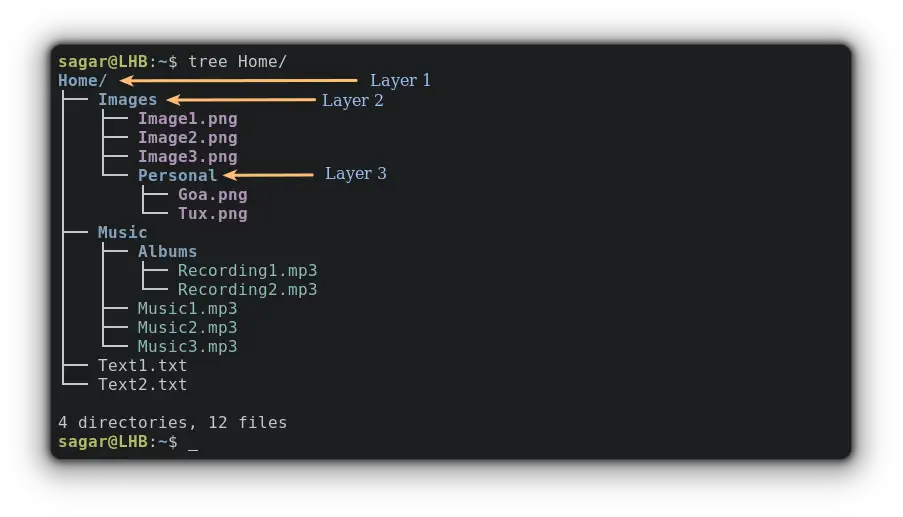- Exclude a directory or multiple directories while using find command
- Method 1 : Using the option “-prune -o”
- Method 2 : Using “! -path”
- Method 3 : Simple 🙂
- Excluding multiples directories
- Exclude Directories While Using Find Command
- Method 1: Using the prune option
- Exclude multiple directories
- Method 2: Using the not operator
- Method 3: Using the ! operator
- Bonus tip: Exclude Subdirectories in find command
- Final Words
Exclude a directory or multiple directories while using find command
As a Linux server administrator or DevOps engineer we need to use find command quite frequently to find a lot of stuff from the server. We can use the find command to find files and directories based on different things; like based on file permission, ownership, size, access time etc. In this blog article we are discussing how we can exclude some directories while doing the find command.
If you have a lot directories, it takes time to do the find operation. This exclude will help you to reduce the execution time while doing the find command.
Is it possible to exclude a directory with find command? Exclude directories while doing running find command? I have a lot directories and how to exclude selected directories while performing the find command to save the find execution time.
Yep, the command FIND has wide range of options to search what you actually looking for. I have already listed different switches and its usages with examples. Here we go for excluding some directories from our find job.
In some cases, we have to exclude some directories from our search pattern to improve the search speed or efficiency. If the server has a lot of directories and we are sure about that the file / directory that we are searching is not in some directories, we can directly exclude those to improve the performance. The result will be faster as compared to the full search.
There are different ways to exclude a directory or multiple directories in FIND command. Here I’m listing some methods!
To explain this, I created the following directories and files:
# find -iname findme ./bit/findme ./com/findme ./cry/findme Method 1 : Using the option “-prune -o”
We can exclude directories by using the help of “path“, “prune“, “o” and “print” switches with find command.
# find ./ -path ./bit/* -prune -o -iname findme -print ./com/findme ./cry/findme The directory “bit” will be excluded from the find search!
Method 2 : Using “! -path”
This is not much complicated compared to first method. See the example pasted below:
# find -iname findme ! -path ./bit/* ./com/findme ./cry/findme If you are interested to read some Kubernetes topics you can check this page https://www.crybit.com/category/devops/k8s/
Method 3 : Simple 🙂
Yes, it’s very simple. We can ignore the location by using inverse grep “grep -v” option.
This is not the recommended way. It do the grep after performing the find operation. So there is no advantage considering the find command execution time. It does the find first then exclude the specific string.# find -iname findme|grep -v bit ./com/findme ./cry/findme Excluding multiples directories
Similar way we can exclude multiple directories also. See the sample outputs:
# find -iname findme ! -path ./bit/* ! -path ./cry?* ./com/findme # find -iname findme | egrep -v "bit|cry" ./com/findme That’s it. Compose it your own ways!!
Exclude Directories While Using Find Command
By default, find command searches in the specified directory and all its subdirectories. You can refine your search by excluding directories while using find command.
Find is an extremely powerful command for searching for anything you want on your Linux system.
By default, it searches in the specified directory and all its subdirectories.
You may not always want that. You can refine your search by excluding directories from the find command search.
In this tutorial, I’ll show various ways to exclude directories while using the find command.
Method 1: Using the prune option
First, let me bring light to how you’re about to use the find command with the prune option:
find [path] -path [directory to exclude] -prune -o -printFor example, I’ve made a directory named prune which contains the following files and directories:
So how about excluding music directory while performing a search?
find /home/sagar/prune -path /home/sagar/prune/music -prune -o -printAs you can clearly see, it only went through the text and images directory as I excluded the 3rd directory.
Exclude multiple directories
Quite easy right? But what about when you want to exclude multiple directories? That can easily be done using the -o operator.
For example, I’ll be excluding music and text directory:
find . \( -path ./music -prune -o -path ./text -prune \) -o -printIn simple terms, you have to chain your directories with -prune and -o inside () as shown fashion to exclude multiple directories.
But find is not bound to only search for files but when paired with exec, can execute scipts, programs, or even commands over output:
Method 2: Using the not operator
Using the not operator is easy compared to what I explained above as syntax is quite simple to grasp:
find [path] -type f -not -path '*/directory to exclude/*'For example, let’s exclude the music directory using the not operator:
find . -type f -not -path '*/music/*'As you can clearly see, the search results do not include any files related to the music directory.
Method 3: Using the ! operator
Yet another easy way to exclude directories while searching is to use the ! operator.
The syntax is similar to what I explained above but a little short in length:
find /path/ -type f ! -path '*/directory to exclude/*'Let’s say I want to exclude a directory named text so my command would be:
But that’s not it. Being one of the most extensive commands, find can also search for files based on modification time.
Bonus tip: Exclude Subdirectories in find command
Well, this is a bit different as this section is going to utilize the term called search depth .
This means I will be specifying how deeper the find utility will search. Here, deep means the layers of the file system. The general structure of the file system looks like this:
And you can adjust the depth of search by using the maxdepth and mindepth options.
So when you use the maxdepth, you’re giving limits to the find utility, or in simple terms, you’re saying «don’t go any further than this limit».
While mindepth is all about where to start the search and will look for every available file at every layer.
So let’s suppose I want to search for text files that are available at the first layer so I’ll be using maxdepth to control the search:
find . -maxdepth 1 -type f -name "*.txt"But what if you want to search into a specific layer that sits in the middle? Well, that’s where the mindepth comes to play!
Let’s suppose I want to search for PNG images specifically inside the Images directory (2nd layer) so I will use maxdepth and mindepth to 2 forcing find to search for a specific directory.
find . -maxdepth 2 -mindepth 2 -type f -name "*.png"Be creative with maxdepth and mindepth and you’ll be able to search for specific files in no time!!
Final Words
This was my take on how to exclude directories while searching files by various methods and if you still have any doubts, feel free to ask in the comments.







